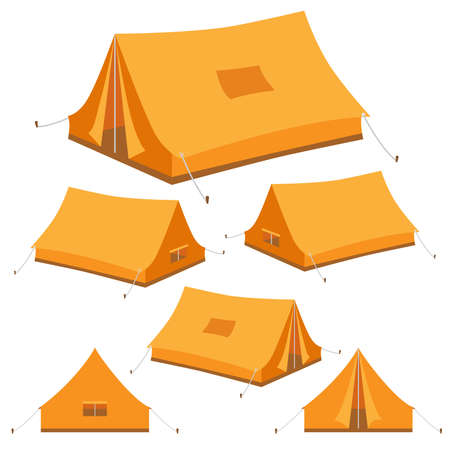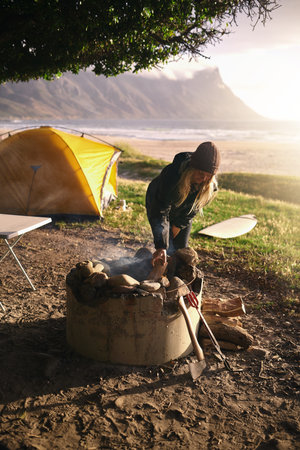Why Waterproof Backpacks Are Essential for Camping
When you’re heading out into the wild, Mother Nature has a way of throwing curveballs your way. One moment it’s sunny, the next you’re caught in a downpour or crossing a misty creek. That’s why having a waterproof backpack isn’t just a luxury—it’s essential for every camper who wants to keep their gear safe and dry. Unpredictable weather is part of the adventure, but soggy clothes, wet sleeping bags, and water-damaged electronics can turn an epic camping trip into a miserable slog. A waterproof backpack acts as your first line of defense against rain, splashes, and even accidental drops in the water. It ensures that your essentials—like food supplies, extra layers, cameras, and survival gear—stay protected no matter what the forecast says. For campers who take their outdoor adventures seriously, investing in a quality waterproof backpack means you’re always ready to face the elements head-on and come out on top.
Key Features to Look For in a Waterproof Backpack
When you’re heading out for a camping adventure in the U.S., choosing the right waterproof backpack can make or break your experience. Here’s what you need to look for to stay dry, organized, and comfortable—no matter if you’re trekking through the Pacific Northwest rain or facing an unexpected downpour in the Rockies.
Must-Have Features Breakdown
| Feature | Why It Matters | What to Look For |
|---|---|---|
| Rugged Material | Stands up to rough terrain, scrapes, and weather abuse | High-denier nylon or TPU-laminated fabric for durability and water resistance |
| Welded Seams | Prevents water from sneaking in at the stitch lines | Fully welded or heat-sealed seams over stitched construction |
| Sealed Zippers | Keeps gear dry even when zippers are exposed to rain | Aquaguard or similar water-resistant zippers with protective flaps |
| Ergonomic Straps | Makes carrying heavy loads more comfortable on long hikes | Padded shoulder straps, adjustable sternum and waist belts, breathable back panels |
| Hydration Compatibility | Keeps you hydrated without unpacking your gear every time you need a sip | Internal sleeve and hose port for hydration bladders, easy-access bottle pockets |
Additional Considerations for U.S. Campers
- Pocket Organization: Look for multiple compartments and quick-access pockets—perfect for separating wet clothes from electronics or snacks from first aid kits.
- Daisy Chains & Gear Loops: Essential for attaching carabiners, trekking poles, or bear spray when hiking in areas like Yellowstone or the Appalachians.
- Reflective Elements: A safety must-have if you’re hiking near dusk or early morning in heavily wooded trails.
- Size & Capacity: Choose 20-35L for day trips; go 40L+ for multi-day adventures with extra gear.
The Bottom Line: Durability Meets Comfort
No matter where your next American camping trip takes you—from coastal forests to desert canyons—investing in a waterproof backpack with these key features ensures your essentials stay dry and organized. Prioritize ruggedness, comfort, and smart design so you can focus on enjoying the wild outdoors—not worrying about soggy gear.

3. Top Waterproof Backpacks for Camping: Our Picks
When you’re out in the wild, keeping your gear dry can be the difference between an epic trip and a miserable one. Here’s a curated list of rugged waterproof backpacks that American campers and backpackers swear by. Each pack below is field-tested, with pros and cons based on real-world use.
YETI Panga 28L Submersible Backpack
Pros:
- Ultra-durable high-density nylon shell resists punctures and abrasions
- Fully submersible HydroLok Zipper keeps water out even in heavy rain or river crossings
- Padded shoulder straps and removable waist belt for comfort during long hauls
Cons:
- Heavier than most traditional hiking packs
- Premium price point may not fit every budget
Sea to Summit Hydraulic Dry Pack 65L
Pros:
- Massive capacity for multi-day trips and group gear hauling
- Tough TPU-laminated fabric withstands rough backcountry abuse
- Roll-top closure offers reliable waterproofing and easy access
Cons:
- No dedicated hydration sleeve or external pockets for organization
- Bare-bones harness system less comfy on extended treks
Earth Pak Waterproof Backpack 35L
Pros:
- Affordable, solid value for weekend warriors or casual campers
- Padded back support and adjustable sternum strap increase comfort
- Front pocket for quick-grab essentials (though not fully submersible)
Cons:
- Main compartment only—limited internal organization options
- Zippers can be stiff until broken in
Patagonia Stormsurge 30L Pack
Pros:
- Sleek design appeals to both outdoor adventurers and urban commuters
- Welded seams keep water out during torrential downpours or paddle trips
- Laptop sleeve adds versatility for travel or daily use
Cons:
- A bit small for longer expeditions or winter camping loads
- No hip belt, so heavier loads can strain shoulders over time
No matter what kind of adventure you’re planning—from Appalachian Trail section hikes to weekend campouts near Lake Tahoe—these waterproof backpacks have proven their worth on America’s trails, rivers, and backroads. Choose based on your trip length, loadout needs, and comfort preferences to stay prepared in the wild.
4. Tips for Keeping Your Gear Dry
When you’re out camping and the skies open up, it’s survival mode for your gear. A waterproof backpack is your first line of defense, but veteran campers know that staying bone-dry requires a few more hard-earned tactics. Here’s how to make sure your essentials stay dry—even in the wildest weather Mother Nature throws your way.
Double Down on Protection
Don’t put all your trust in one layer. While your waterproof backpack is crucial, seasoned outdoors folks always use extra barriers:
| Item | Purpose | Pro Tip |
|---|---|---|
| Dry Bags | Store electronics, clothes, food inside backpack | Color-code by category for quick access |
| Ziploc Bags | Protect small items like matches or first-aid kits | Squeeze out air to save space |
| Pack Liners | Heavy-duty trash compactor bags inside backpack | Tie off the top before closing backpack lid |
Packing Like a Pro
The order you pack matters. Put your sleeping bag and clothes at the bottom—those need to stay driest. Place heavier, less water-sensitive items like cookware or food higher up. Use external pockets only for things that can survive a little moisture (think water bottles or quick-grab rain jackets).
Strategic Use of Backpack Features
Modern waterproof backpacks have smart features—use them! Tuck rain covers snugly over zippers and seams. Cinch down compression straps to prevent water pooling in loose fabric folds. Stash wet gear in dedicated compartments so nothing else gets soaked.
Field-Tested Tricks from U.S. Campers
- Duct tape any worn seams as a temporary fix—rain waits for no one.
- If you stop for camp, hang your pack from a tree branch instead of resting it on soggy ground.
- Always do a gear check before heading out: if it’s not sealed up tight, it’s not ready for rain.
No matter where you’re camping—from the Pacific Northwest’s relentless drizzle to sudden East Coast downpours—these tips will keep your kit high and dry, letting you focus on adventure instead of damp socks.
5. Choosing the Right Backpack for Your Adventure
Picking the perfect waterproof backpack isn’t just about keeping your gear dry—it’s about matching your pack to the demands of your trip. Whether you’re planning a quick weekend hike in the Rockies or a multi-day trek through Yosemite, here’s how to choose smart.
Pack Size Matters
Weekend Warriors (1-2 Nights)
For short getaways, look for backpacks in the 20-40L range. This size is compact yet roomy enough for essentials: rain gear, food, hydration, and a lightweight sleeping system. Choose streamlined designs that won’t slow you down on narrow trails.
Extended Expeditions (3+ Nights)
If you’re heading out for several days, opt for a 50-70L pack. You’ll need space for extra clothes, a sturdier shelter, and more food. Go for packs with adjustable frames and padded hip belts—they’ll save your back when the miles add up.
Key Features to Look For
- Waterproof Zippers & Seams: Don’t settle for “water-resistant.” Fully taped seams and roll-top closures are a must in unpredictable weather.
- Compartments & Organization: Look for multiple pockets and internal dividers. Easy access to first aid kits or snacks can be crucial in the wild.
- Hydration Compatibility: Built-in sleeves for water reservoirs make it easier to stay hydrated without stopping.
Designs That Match Your Camping Style
Minimalist Hikers
If you like to keep things simple, go with sleek packs featuring fewer straps and external attachments. Less bulk means less snagging on brush—and a lighter load overall.
Gear-Heavy Adventurers
If fishing rods, camera gear, or climbing ropes are coming along, pick packs with daisy chains, gear loops, and reinforced lash points. Modular designs let you adapt as your needs change.
Final Thought
Your waterproof backpack should work as hard as you do. Match its size and features to your adventure—don’t compromise on comfort or durability. With the right pack by your side, no storm or river crossing will slow you down.
6. Frequently Asked Questions about Waterproof Backpacks
How Durable Are Waterproof Backpacks for Camping?
Durability is a top priority when you’re venturing into the wild. Most high-quality waterproof backpacks are constructed from rugged materials like ripstop nylon, TPU-laminated fabric, or heavy-duty PVC. These materials resist tears, abrasions, and punctures common in the backcountry. Reinforced seams and robust zippers add extra toughness. However, no pack is truly indestructible—dragging it over sharp rocks or stuffing it beyond its capacity will eventually cause wear. For long-term reliability, look for packs with double-stitched seams and high-denier fabrics.
What’s the Real Deal with Waterproof Ratings?
Backpacks labeled as “waterproof” often feature an IP (Ingress Protection) rating. For camping, an IPX6 or higher rating means your pack can handle heavy rain or splashes but may not survive full submersion. Roll-top closures and welded seams are more reliable than stitched zippers for keeping water out. Remember: “Water-resistant” isn’t the same as “waterproof.” For river crossings or torrential downpours, always double-check the manufacturer’s specs and consider using dry bags inside your main compartment for extra protection.
How Should I Care for My Waterproof Backpack?
Proper care extends the life of any outdoor gear. After each trip, rinse off mud and debris with fresh water—never use harsh detergents that could damage waterproof coatings. Air-dry your backpack thoroughly before storing to prevent mildew. Periodically inspect seams and closures for signs of wear or delamination. If your pack develops small holes or leaks, repair kits designed for outdoor gear can patch things up fast. Lastly, avoid prolonged exposure to direct sunlight when not in use, as UV rays can degrade waterproof materials over time.
Can I Trust a Waterproof Backpack in Extreme Conditions?
A quality waterproof backpack will keep your gear dry during typical camping conditions—think rainstorms, river splashes, or wet ground. However, if you expect full immersion (like kayaking or canyoneering), even the best packs have their limits. Always test your pack before heading out by simulating field conditions at home; this way you know exactly what to expect when you’re miles from help.
Should I Use Additional Protection Inside My Pack?
Seasoned campers in the U.S. often double up on protection by placing sensitive items like electronics and clothing in separate dry sacks inside their main backpack compartment. This “belt-and-suspenders” approach adds peace of mind—and could save your trip if your pack ever takes a dunking.
Have more questions? Hit up your local outdoor retailer or trusted online forums for real-world feedback from other American campers who put their gear through the wringer.

